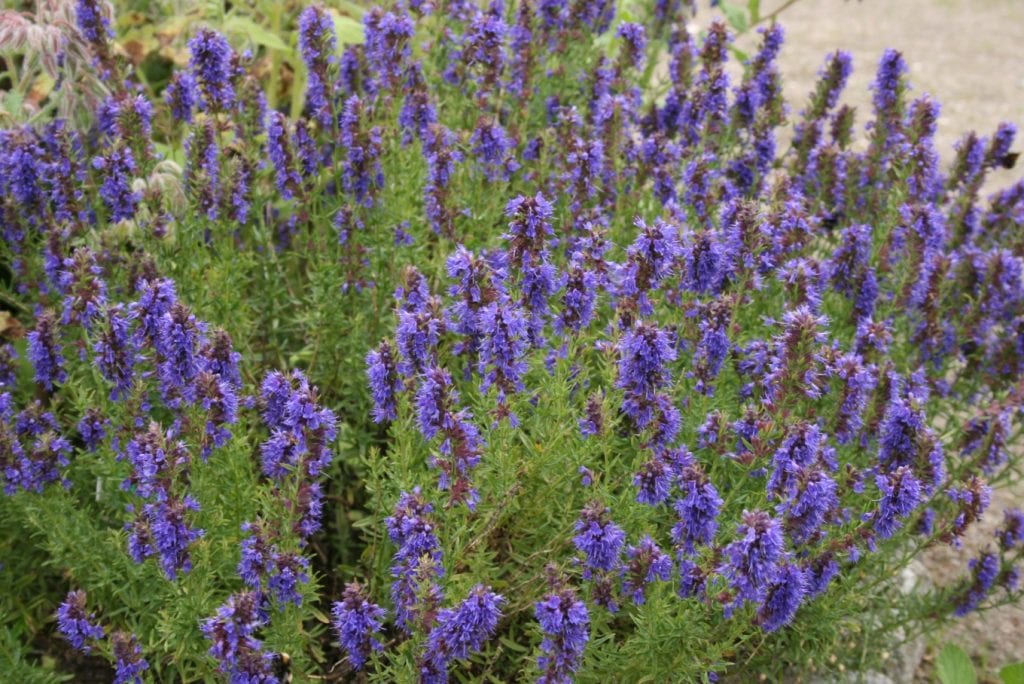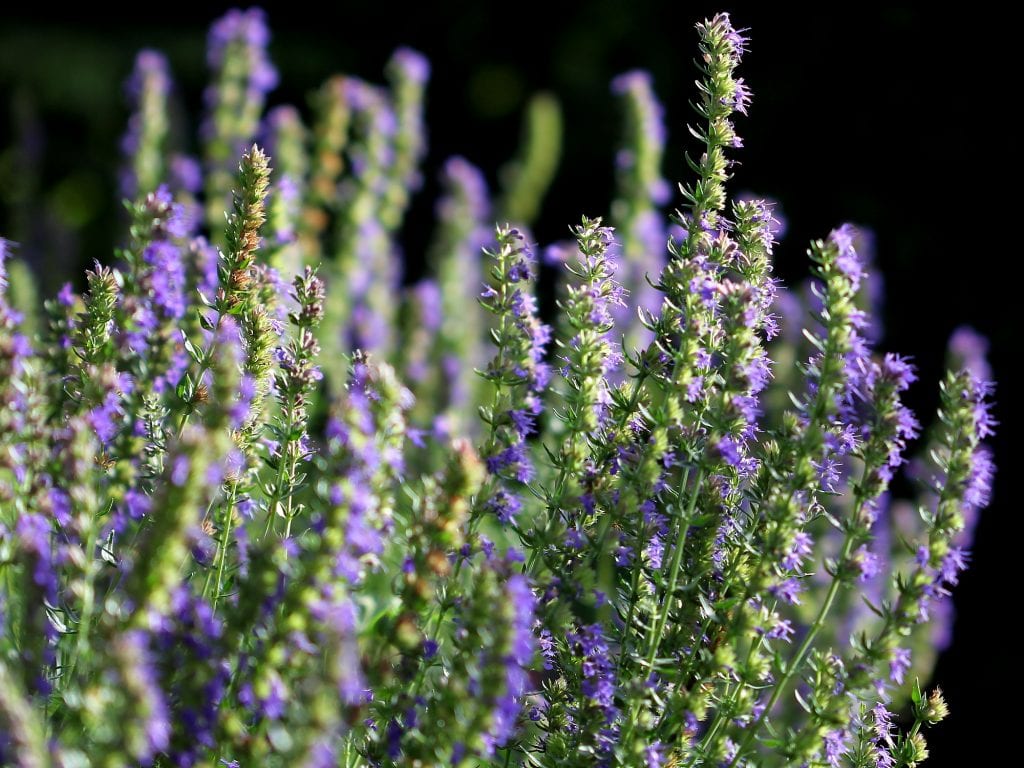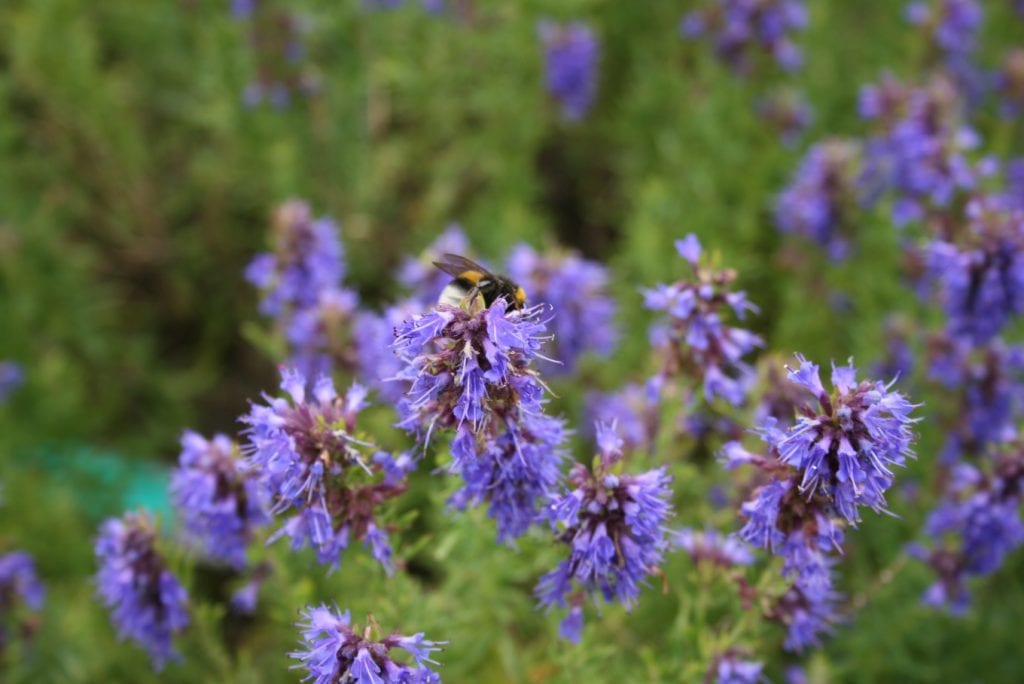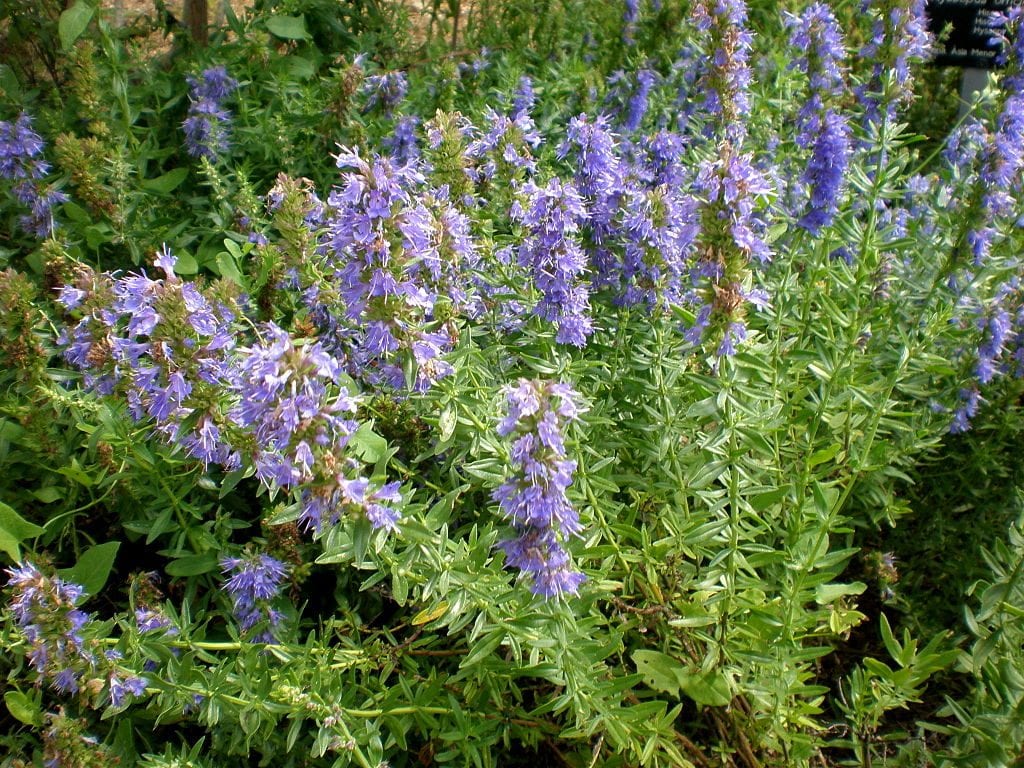
El hyssop It is a small-medium-sized plant that not only looks spectacular in sunny gardens or patios, but it should also be noted that it has very interesting medicinal properties. Which are?
To find out, I invite you to read the special we have prepared on this interesting plant. You will learn everything about its cultivation, what pests affect it and how to combat them, and of course, the uses it has. Are you going to miss it?
Characteristics of the swab

Our protagonist is a lively bush or subshrub, that is, it is evergreen and also lives for several years, native to southern Europe, the Middle East and the shores of the Caspian Sea. Its scientific name is Hyssopus officinalis, and belongs to the botanical family Lamiaceae. It is characterized by growing up to 60cm in height (sometimes it stays at 30cm), and by having stems that branch from almost the base. These stems are straight, and are covered with leaves 2cm long, opposite, entire, linear to lanceolate with a very short petiole, and pubescent on both sides, which are dark green.
Its flowers appear grouped in inflorescences in the form of dense blue or white spikes, very fragrant. When they are pollinated, the fruit takes the form of an achene - a dried fruit that contains a single seed - oblong. Once the fruit has fallen, the entire flower stalk withers, but before that happens, the seeds can be collected and sown to get new plants. Later we will explain how to sow hyssop.
Farming
If you want to have a plant like this in your garden or in a pot, follow our advice to be able to enjoy it for years:
Location
For it to grow properly, it needs to be located in the Exterior, in an area where it is in direct sunlight.
Transplant
Whether you want to move to a larger pot or to the garden, it has to be done in spring, after the risk of frost has passed and temperatures, both maximum and minimum, begin to rise.
Soil or substrate
It is not demanding. It grows on all types of soils and substrates. The only thing to keep in mind is that it must have good drainageOtherwise the roots will rot quickly and the plant will dry out.
Irrigation
Resists drought well, so It will be watered up to 3 times a week in summer, and up to 2 times / week the rest of the year.
Subscriber
It is highly recommended fertilize during warm months and up to a month before cold weather sets in with organic fertilizers. If it is potted, liquids such as guano or the seaweed extract fertilizer following the indications specified on the packaging; On the other hand, if we have it on land, we can use those that are presented in powder, such as manure, pouring a thin layer around and mixing it with the earth.
Pruning
Pruning is not necessary, but it is flower stalks must be removed once they wither.
Rusticity
It supports well the frosts of up to -5ºC. If the winter is colder in your area, you can have it inside your home, in a room where there is a lot of natural light and there are no drafts, during these months until the good weather returns.
Plagues and diseases
It has no potential enemies. Maybe it can be affected by cottony mealybugs or by aphids if the environment is very dry, but both pests can be easily prevented and / or fought with Neem oil or with potassium soap.
How does it multiply?

Obtaining new specimens of hyssop is very simple, so much so that you will only need to acquire the seeds in spring and follow these steps:
- The first thing you should do is put them in a glass of water for at least 12 hours to hydrate and, incidentally, to know which ones are viable - which will be the ones that sink.
- Afterwards, you have to fill the seedbed with universal growing substrate. As such you can use flowerpots, milk containers, yogurt glasses, clean cork trays, flowerpots ... Anyway, whatever comes to mind. The only condition is that it must have holes for drainage.
- Next, place a maximum of two seeds on the surface of the substrate in each seedbed, or in each socket if you are using the seedling trays sold in nurseries.
- Cover them with a very thin layer of substrate.
- And finally he waters.
In order for them to germinate as soon as possible, it is advisable to place them in an area where direct sunlight hits them, and not let the soil dry out. A) Yes, the first seedlings will sprout after a week… Or before 😉.
Uses and properties of hyssop
It is a plant that is used as an ornamental, but it also has culinary and medicinal uses. Let's see what they are:
- Ornamental use: It is an aromatic plant that has flowers of a very beautiful blue-purple color, which beautify any corner of the garden, patio or terrace.
- Culinary uses: the leaves, fresh or cooked, are added to salads, soups, casseroles and sausages, and the flowers are used to present meat dishes.
- Medical uses: It is used as an infusion against respiratory tract conditions, such as constipation or bronchitis.
And, as a curiosity, to say that it is a honey plant, which is why it is often planted in gardens to savor its exquisite and tasty honey.
When is it harvested?
In order to make the most of its properties, is harvested in late spring. The stems are cut, and they are placed to dry for about six days, so that they are not in direct contact on the ground or with the table. You have to turn them several times so that they dry well.
After that time, the leaves are removed or chopped, and stored in watertight containers for a maximum of 18 months.

What did you think of this curious plant? Do you dare to cultivate it?